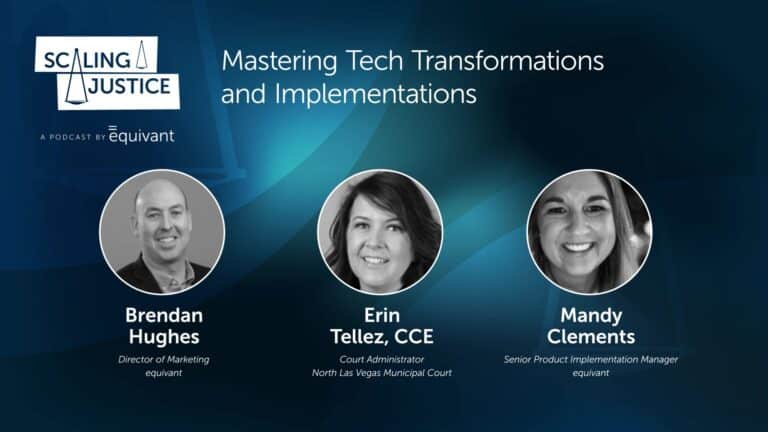Data transparency is the process of making data easily accessible and understandable. It is essential to building community trust and ensuring that courts communicate clearly and accurately with one another. So, what’s being done to promote data transparency within justice agencies? And how are courts getting involved?
Why Has There Been a Push for Data Transparency?
Ensuring fairness and equality in the court system is important. Providing data that is easy to access and understand is a big part of that. We’ve seen a social justice movement emerge over the last several years pushing for data transparency. Community members want to see how data is being used so that they know things are being done fairly and equitably. When courts can’t clearly display data, community members begin to lose trust in the justice system.
Establishing National Standards Promotes Equity and Fairness
It’s a challenge to provide data transparency without a set of standards. For a long time, there wasn’t much momentum for establishing standards. As a result, no one had developed a process to capture and display data in a way that made sense to people who weren’t working within the justice system.
The National Center for State Courts (NCSC) has addressed this with the National Open Data Standards (NODS) initiative, which provides rules around how data are defined and recorded. NODS ensures vendors (like equivant) and courts communicate accurately so that the system is fair for everyone. It also allows easier access to reporting and statistics, higher quality data, and more efficient collaboration.
Understanding the Roadblocks to Adopting National Standards
Although establishing NODS was a step toward more transparent data, there’s still work to do. NODS is relatively new and hasn’t been widely adopted yet. From an industry standpoint, vendors must ensure that their technology solutions support national standards. For equivant JWorks users, this means that when your state, jurisdiction, or court works with the NCSC to adopt NODS, you will already have the technology to support both the naming conventions/definitions and the technical standards that define the data structure, variable formats, and values.
Additionally, there is an overall awareness issue. Since NODS is still in the early stages, the conversation around the standards is still ramping up. Until most people in the justice space are openly talking about what these standards mean and how they have been implemented, there are going to be some who don’t know what NODS is.
Making Use of Transparent and Accessible Data Improves Efficiency and Access to Grants
While there are still some roadblocks to the widespread adoption of NODS, those who have adopted the standards are putting them to good use. First, providing good data that are measured correctly helps agencies get funding and grants. Second, government officials use the data to ensure that courts run efficiently, fairly, and equitably for everyone. Government officials don’t do what they do to be wealthy. They want to provide a good service to their community, and transparent data is an important step to accomplishing that.
Get Started with NODS with a Few Simple Steps
Vendors and courts need to work together to promote more widespread adoption of NODS. If you’re not already, consider getting involved in committees that are contributing to the NODS project, like the NCSC. It’s also important to start the conversation. Talk with other courts about what types of procedures they have put in place for adopting data standards within their jurisdiction.
Data transparency can be challenging when you have so much to work with. Although it takes some work upfront to adopt NODS, in the long run, it will make it much easier for you to provide quality, accessible data. Are you looking to get started? We can help.




